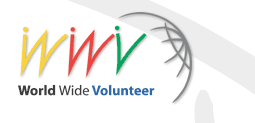Report: PrepCom II of the World Summit on the Information Society (Phase I)28 February 2003 © Executive Secretariat of the WSIS (Civil Society Division) and ICVolunteers, Geneva, Switzerland Contents
Multi-Stakeholder Roundtable No. 1 - ICT Infrastructure and FinancingTime: 18 February 2003, 10:00-13:00 Location: International Labour Orgnization (ILO), Room 1 Chair: Presenters/ Participants: Mr. Francisco Gomez Alamillo, Secretary General, Hispano-American Association of Research Centres and Telecommunications (AHCIET) * Roundtable themes are neither exhaustive nor binding on Governments regarding possible themes for the WSIS declaration. The Multi Stakeholder Roundtable No1 was diverse in its geographic representation, its topics and the background of the speakers. They were from a research board, an association of research centres, a development bank, the ITU, a university and an Ngo in Africa. The presentation focused on the financing and infrastructure of ICTs. Digital Divide from a Latin American Perspective To demonstrate how challenging this is, Mr. Alamillo recounted that at the Buenos Aires development conference, the ITU aimed at achieving this 20% goal, but only managed 12%. Poverty, he said, has contributed to the widening digital gap. He gave the example of Latin America where many people live on less than USD 2 per day, and only 10% of the population have access to telecommunications. The combination of these factors and the purpose of this WSIS PrepCom-2 Conference led him to conclude that the dilemma and challenge for the participants was now to ensure that the forthcoming information is used constructively to contribute towards positive increase and use of telecommunications. Telecommunications in China By 2002, there were 240 million telephone and mobile telephone subscribers. The problem of cost and access to the Internet was resolved for many partly through mobile telephones. Mr. Zemin also cited that China has some 21 million PC's, 59 million people connected to the Internet and have produced 371,000 websites. Mr. Zemin said that with all this, China has the largest information structure. When summarizing the model of China's telecommunications, Mr. Zemin highlighted the principle that "informatisation should push forward industrialisation and industrialisation should push forward informatisation". China's model calls for environmental protection and also encourages the Government to use e-governance. He pointed out that the Government has already implemented systems of e-governance such as the golden taxing system. Regarding funding, Mr. Zemin said the primary source for funding for research and application of information technologies should come from the market. He added that enterprises should be willing to give funds for such ventures too. Mr. Zemin pointed out that the Government could play a role in financing by creating the right environment for such enterprises to fund the programs. He noted that the Chinese government has indeed encouraged the development of telecommunications companies. China telecom was the only monopoly, but now there are six other companies. Other high-tech projects in China include the "Future Mobile Broad Band Projects" and IPV6 projects that foster commerce. He said there are also some technical laboratories such as the "China Mobile Network", which support the whole industry. All this, Mr. Zemin said, was part of a greater national goal and effort to raise the income of people in China to USD 3,000 per person by 2020. Aims and Functions of the Inter-American Development Bank Mr. Brenner said that in the Information and Technology field, the IADB's role includes facilitating access of technologies to member counties. It also contributes to the translation of Government roles into action plans. He cited some initiatives of the IADB such as the BID communication agenda, Telecommunications Initiatives of the Puebla Panama Plan, and the Initiative of Integrating Regional Infrastructure in South America. Situation and Context of Telecommunications and ICTs Telecommunications and ICTs today
Mr. Touré observed three main challenges:
The digital divide
Role of ITU
ITU-D fulfils the purposes of the Union and works to implement and fund projects to facilitate and enhance telecommunications development. It does this by offering, organizing and coordinating technical cooperation, and through assistance activities. Istanbul Action Plan Digital Infrastructure Divide For information on the new model of research networks, Mr. Serra cited _ LIENHYPERTEXTE "http://www.evl.uic.edu/activity/NSF/ppt/1" __www.evl.uic.edu/activity/NSF/ppt/1_ He also mentioned the Global Light Rail Project and the Latin American Optical Networking Project, which work towards improving telecommunications and ICTs. Africa's role and participation in the development of telecommunications and ICTs He emphasized that Africa's exclusion and marginal role so far was not necessarily only due to insufficient bandwidth or lack of telephone lines or mobile telephones. In fact these have dramatically increased. The reason, he said, was mostly because many skilled and educated Africans work in the West, and also because education in Africa is not as widespread as it should be. "There is a lot of brain drain", he underlined. He suggested that what Africa needs is a new model. Mr. Top urged deregulation and more networking and links between Africa and Asia and Europe. He also observed that the development needs of developing countries have not been adequately addressed. He said more investment was needed in rural areas. In his conclusion, Mr. Top supported President Wade's proposal of digital solidarity. Through this initiative countries would contribute towards a fund to facilitate programs that will bridge the digital divide. Posted: 2003-2-28 Updated: 2007-8-24 | ||








